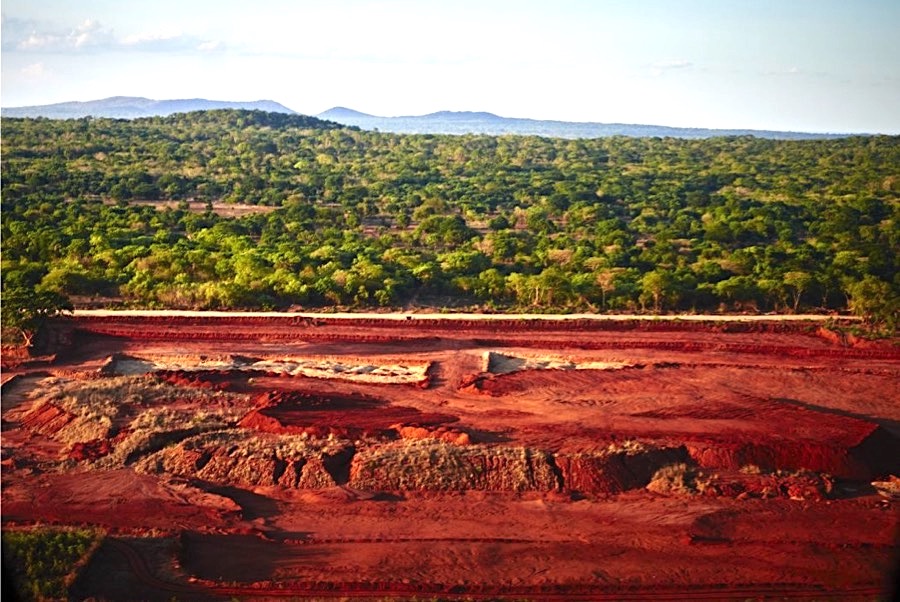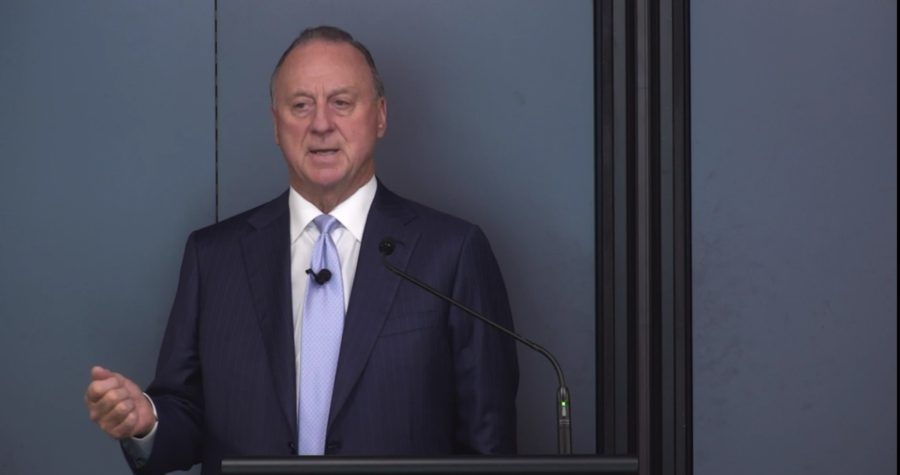By RFE/RL staff - Oct 19, 2024
Kazakhstan's recent referendum approved the construction of a nuclear power plant, but the selection of the builder remains a complex geopolitical decision.
Russia's Rosatom is a leading contender, with a strong track record in building nuclear plants globally, but its involvement raises concerns about dependence and security risks.
Kazakhstan favors an international consortium to mitigate risks, but the feasibility and effectiveness of such an approach are uncertain.

With the result of Kazakhstan's controversial nuclear power referendum being a resounding "yes," attention now turns to which country will build the facility.
Kazakhstan's government has spoken in favor of an international consortium of nuclear energy companies taking up the task while noting that a final decision will not be made until next year.
But if Kazakhstan were to ignore Russia's Rosatom completely, it would be bucking a global trend.
Amid the war in Ukraine, and Moscow's increased diplomatic isolation, nuclear energy projects in foreign countries have become an even more important part of Russia's efforts to retain clout on the international stage.
Indeed, in a paper on Russian "nuclear energy diplomacy" published last year, scholars from the Norwegian Institute of International Affairs argued that nuclear energy could be "Russia's overlooked trump card in a decarbonizing world."
With the stakes high, the Kremlin will no doubt be expecting its energy-strapped partners in Central Asia to play ball, with Uzbekistan already signed up for a small Rosatom-built nuclear power plant and Kyrgyzstan mulling a facility that would be even smaller.
But at what cost -- financial or otherwise -- might Rosatom's growing outreach in the neighborhood come?
"Central Asia has a special place in Russian nuclear energy diplomacy because of the post-Soviet heritage, meaning that Rosatom's operations in the region are easier and smoother than elsewhere -- no language barrier, institutional and personal contacts going back to Soviet times," a co-author of the paper, Kacper Szulecki, told RFE/RL.
In this way "nuclear energy can be an element of [Russia's] maintaining visible economic and symbolic presence in the region," he said.
At the same time, nuclear power projects can create "hard dependencies" for host countries if their share of total power production becomes significant, while posing security risks that are unique to nuclear power, Szulecki argued.
"Some of the risks we examined [in the paper], like sabotage, are things which have a low likelihood of occurring, but potentially very destructive impacts," he said.
Globe-Trotting Rosatom
According to The World Nuclear Industry Status Report (WNISR) 2024, Rosatom "is the primary constructor and exporter of reactors, building 26 out of the 59 units under construction worldwide as of mid-2024."
At least 20 of those units are being built outside Russia, with Bangladesh, China, Egypt, India, and Turkey among the clients.
And while nuclear power as a whole has lost its share of global power production since the 2022 Fukushima accident, Russia remains "unashamedly nuclear" in the words of the World Nuclear Association, an advocate for the global industry, prioritizing new reactors over renewables for the most part.
It's not hard to see why.
The bills for nuclear power stations are large and seemingly growing.
The 4.8 gigawatt (GW) Akkuyu nuclear power plant that Rosatom began building in Turkey's Mersin Province in 2018 is commonly referred to in the media as a $20 billion facility.
But as recently as June, Rosatom Director-General Aleksei Likhachev put the price of the plant that will supply around 10 percent of Turkey's total power at $24 billion-$25 billion.
The 2.2 GW facility in Bangladesh is priced at $12.65 billion, with the vast majority of the financing coming via a Russian loan. The agreement for that facility was reached in 2011, with construction only beginning in 2017.
And Kazakh Deputy Prime Minister Roman Sklyar acknowledged -- once the results of the referendum were already in -- that the $10 billion to $12 billion price tag for the model his government is committing to might rise by as much as 50 percent over the next decade with inflation.
While Rosatom's aggressive search for clients is ongoing, it has also lost some as a result of the war.
In 2022, Finnish-led consortium Fennovoima announced that it was pulling out of its planned reactor project with the company, citing delays and increased risks due to the war in Ukraine.
Rosatom has not been directly targeted with sanctions, but some of its supply chains have been affected, delaying projects.
Those risks are seemingly on the minds of policymakers in Central Asia, too.
Tellingly, Skylar said Kazakhstan would include a "sanctions clause" in any agreement for the nuclear power plant, without naming Russia specifically.
Uzbekistan, meanwhile, has reined in its nuclear vision.
In 2018, when Russian President Vladimir Putin paid a visit to Tashkent, the two countries broke ground on building a nuclear facility with a projected 2.4 GW capacity, which would have accounted for around one-fifth of Uzbekistan's energy needs. It was to cost $11 billion.
The needle on that project never really moved after that, and when Putin and his counterpart Shavkat Mirziyoev confirmed a fresh deal for Rosatom to build a nuclear facility in the country of 35 million people earlier this year, it was for a facility that will feature six nuclear reactors with capacities of just 55 megawatts (MW) each.
Talking Consortiums
Central Asian neighbor Kyrgyzstan said in 2023 that it was also in talks with Rosatom for a relatively small nuclear facility with a reported 110 MW capacity.
But in May, Deputy Energy Minister Taalaibek Baygaziev said that just preparing specialists and laying the ground for such a project would take a full decade. By contrast, Rosatom is expected to complete its first foreign foray into wind power -- a 100-MW wind farm in Kyrgyzstan's Issyk-Kul Province -- in the next two years.
While power deficits in Kyrgyzstan and Uzbekistan are more severe, they are also becoming a problem in Kazakhstan, where authorities are adamant that nuclear energy is a big part of the solution.
This week, after the results of a tightly managed October 6 plebiscite showed that more than 70 percent of voters had backed a "yes" vote on the construction of a nuclear power plant, officials from President Qasym-Zhomart Toqaev downward reiterated their preference for an "international consortium" to build the plant.
Sklyar said that such a consortium would consist of "no more than five countries," a figure that presumably takes in China, France, Russia, and South Korea -- the countries that have already registered their interest in building the facility -- as well as Kazakhstan itself.
This idea of an international consortium is in keeping with Kazakhstan's desire to find common ground for partner countries amid sky-high geopolitical tensions.
But even ignoring the complications of getting rivals to work together, that isn't really how nuclear power plants get built, says Mycle Schneider, coordinator and publisher of the 2024 WNISR survey of the industry.
"Yes, nuclear power projects are international and often hundreds of companies can be involved," Schneider told RFE/RL.
"But the main question is always, ‘Who will be the responsible builder that takes on the investment risk?' Five companies with a 20 percent share each of the project? That doesn't happen."
And of those companies orbiting the project -- China's CNNC, France's EDF, South Korea's KEPCO, and Rosatom, "Rosatom is the only one that has been really successful winning foreign contracts to build reactors lately," the industry expert noted.
In a Kazakh government FAQ on the referendum, the government reassured those fearful that the facility might be manipulated by a foreign power. which could wield influence over the country, that the issue was "purely commercial, not political."
"The selected company or group of companies will only be involved in the construction -- not the operation -- of the station," officials insisted.
Again, Schneider argues it's not that simple.
"First, the acquisition of a nuclear power plant is a political issue in itself. Secondly, every power reactor design is highly specific and cannot be operated without technical assistance from the provider," Schneider told RFE/RL. "Operators are even trained for individual reactor models and cannot simply move from one to another. Training of autonomous operators takes years."
By RFE/RL




